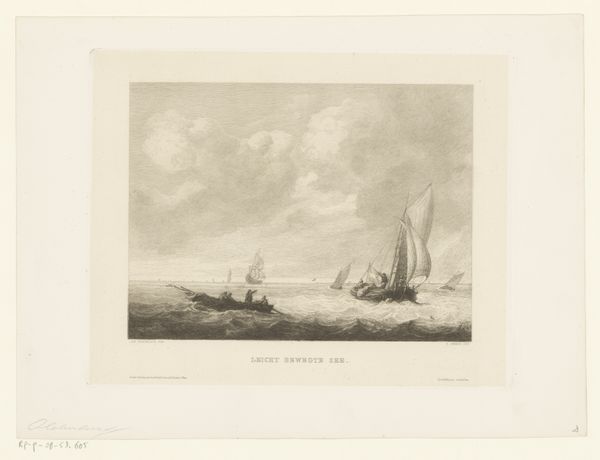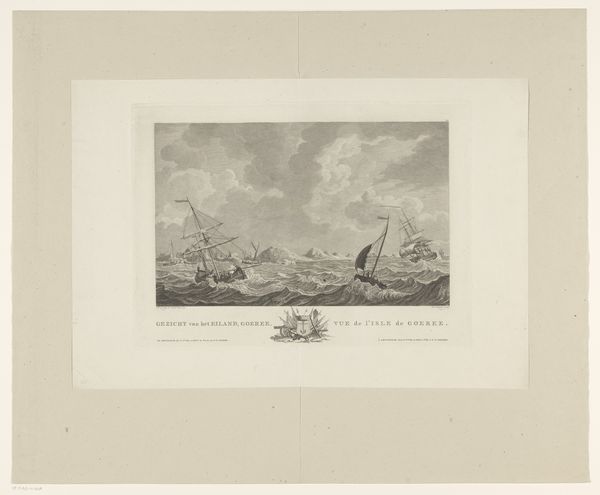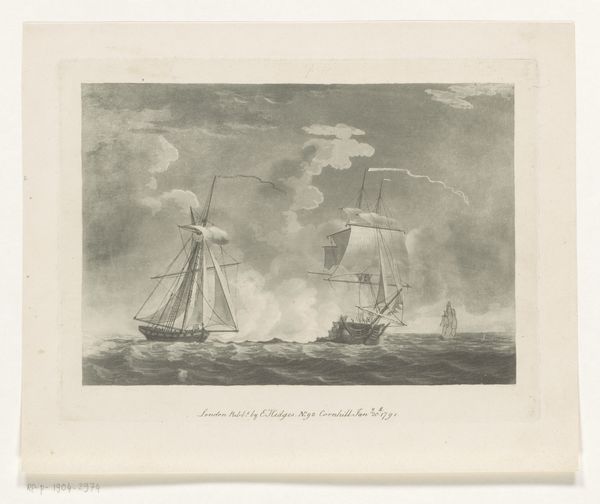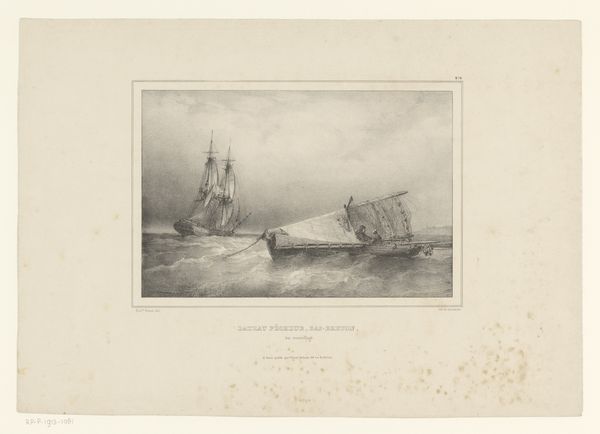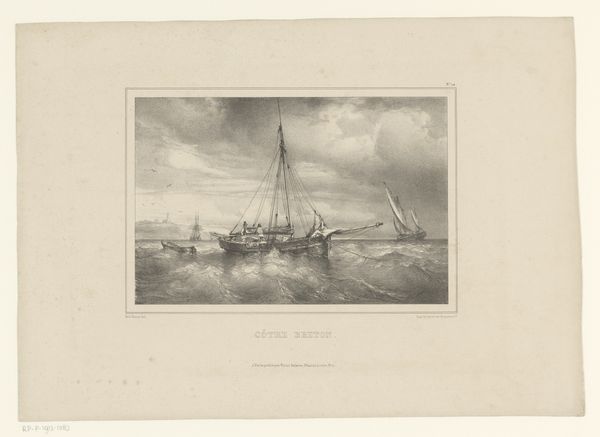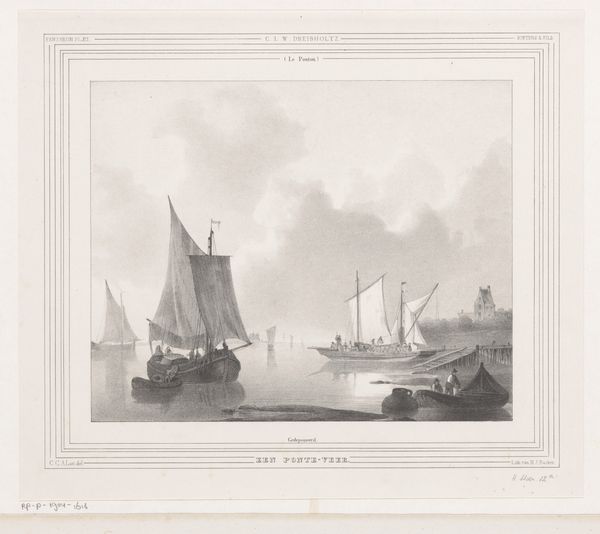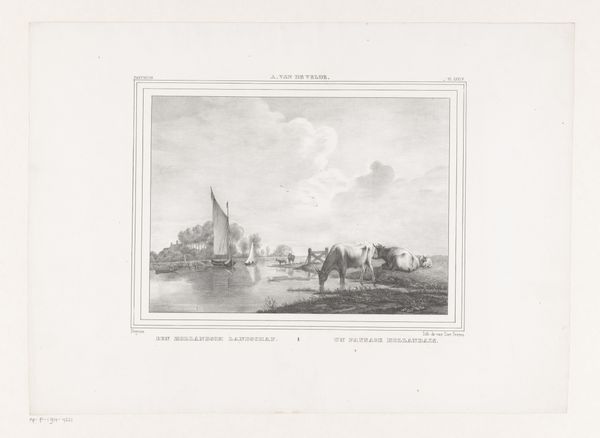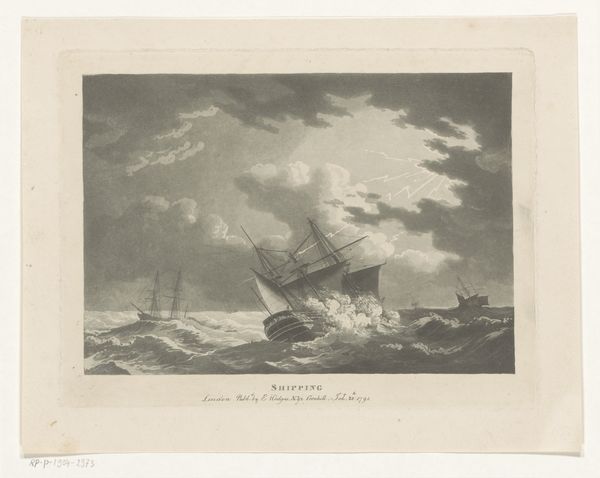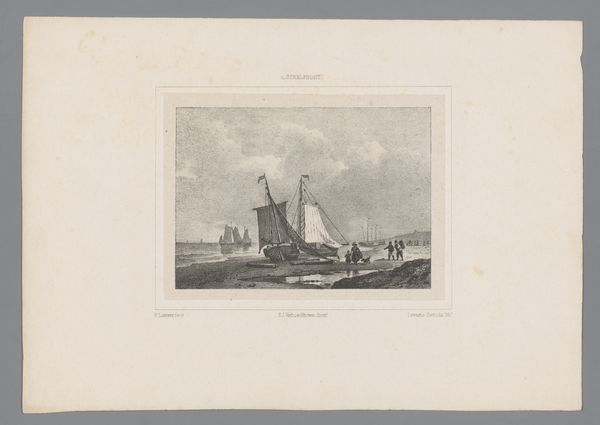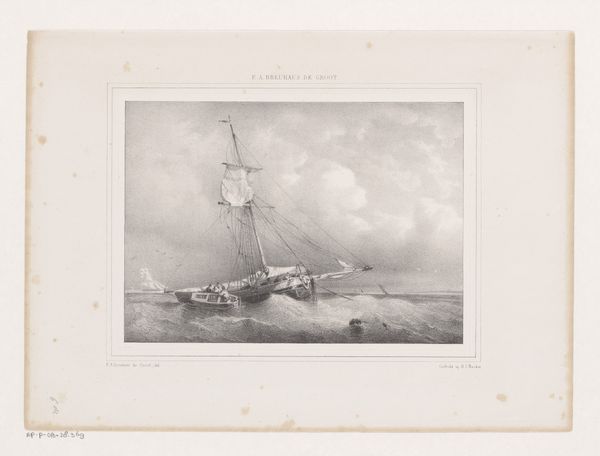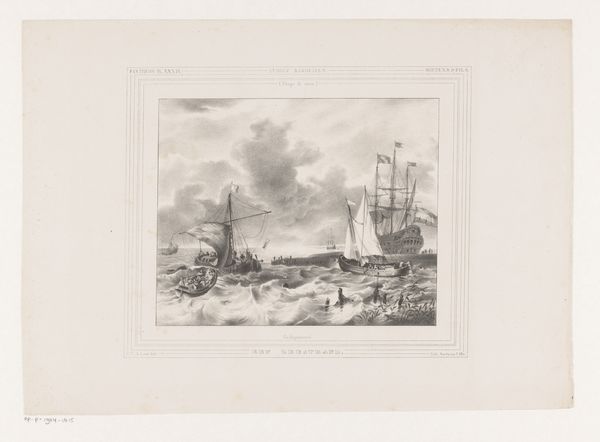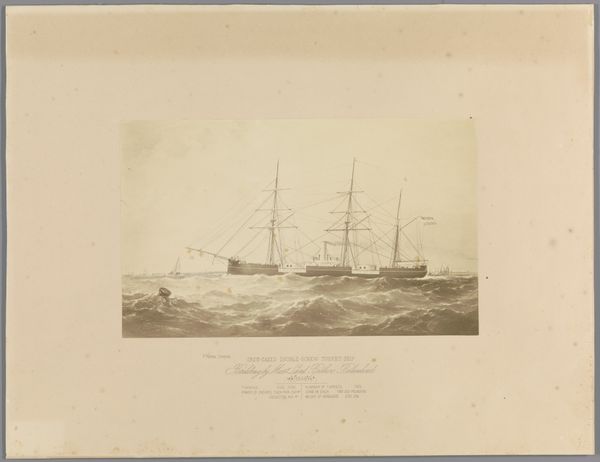
print, engraving
# print
#
landscape
#
figuration
#
romanticism
#
engraving
#
sea
Dimensions: height 291 mm, width 401 mm
Copyright: Rijks Museum: Open Domain
Curator: Let's turn our attention to "Vissersboten vissend op haring," or "Fishing Boats Fishing for Herring," an engraving made sometime between 1839 and 1851 by Ferdinand Victor Perrot. Editor: Well, my first impression is, wow, that sea looks awfully choppy for fishing. It's a surprisingly tumultuous scene; I almost feel seasick just looking at it. All that restless water under a heavy sky. Curator: It's definitely got that Romantic drama. Notice the level of detail he manages to achieve with just engraving. The rendering of the waves is particularly striking. It gives a sense of the harsh realities of life at sea and how the materiality and its process reinforce it. Editor: Absolutely. And look at the way he's suggested the textures of the boats, the way the light catches on the sails – you can practically feel the dampness. Engraving feels almost industrial. And, if this scene depicts herring fishing in particular, the question arises, were the materials accessible, affordable to a wide range of potential consumers or patrons? Did this play a significant part in promoting access to landscapes such as the North sea to those further removed from its waters? Curator: Good points. Romanticism loved this kind of dramatic seascape as a means of exploring themes of man versus nature, the sublime, and the power of the elements, while showing the labor behind these raw scenes and its direct consumption by potential consumers. Editor: But those weren't exactly egalitarian concepts, were they? Only those in a social or material position had time to enjoy romantic contemplation on the high seas, a space of daily labor, sustenance, and class division for others. Curator: Fair point. I suppose Perrot presents a sanitized view, focusing on the aesthetic experience. Still, there's no denying the skill in rendering this scene; the detail in the ships themselves shows us much about them, even down to the equipment and dress of the people on board. I can almost hear the shouts and creaking of wood. It feels oddly sensory for such a limited palette. Editor: True, the image draws us in with its immediate visual power and its connection to our shared environment, although each may engage differently. This could then prompt discussion as we delve deeper into our critical perspectives and the potential and impact that this work has as an accessible artistic product. Curator: It's funny how an image rooted in such difficult working conditions can trigger feelings of something bordering on admiration now. Editor: Perhaps we should admire the labor required to bring a fleeting, material product to the sea in front of our eyes, an endeavor to make what is otherwise ungraspable a physical reality.
Comments
No comments
Be the first to comment and join the conversation on the ultimate creative platform.
